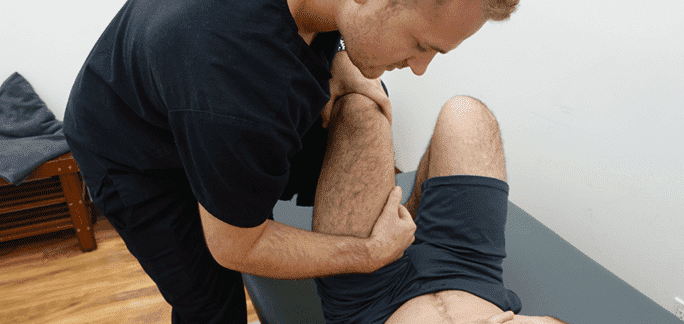Hip pain can become debilitating, and this condition affects millions of people every single year. The pain can cause minor difficulties during daily life, or it can be a debilitating pain that severely limits the range of motion.
Some people can become incapacitated entirely because of the intensity of the pain. Understanding the sources of hip pain can help people who are suffering from this condition to make informed decisions about the most appropriate steps to take.
There are multiple causes of hip pain, and the source of the pain should always play a central role in determining the treatment plan. Although there are many variations in individuals experiencing hip pain, our clinical experience has shown patterns as well. For example, one of the most common forms of hip pain is caused by the muscles that originate at the sacral bone and insert at the greater trochanter of the femur, or thigh bone.
These muscles are involved in lateral rotation of the leg, which is necessary because the normal forces of gravity encourage medial rotation. When these muscle groups are dysfunctional, they can entrap a portion of the sciatic nerve before it innervates the muscles of the leg.
Additional types of hip pain might involve the following:
Soft Tissue Tears: The soft tissues of the hip joint can experience tears when the load placed on them exceeds their capacity to withstand the pressure. An example of this is a tearing of the connective tissue within the delicate ring that surrounds the socket of the hip joint. This is called the labrum, and it does not receive a lot of vascular branches. As a result, the blood flow to this area is less than optimal for fast healing. Physical therapy can support the local circulation through indirect strengthening of the supporting muscle groups. The physical therapist can also assist patients in learning new movement patterns that relieve the pressure and reduce the tendency to injure the area during daily activities.
Strains and Sprains: The muscles that adduct the hip can be strained or sprained during quick movements that involve a change in direction. The likelihood of injury increases when velocity is added to this type of movement. In other words, an injury is more likely to happen when the athlete is traveling fast during the sudden change of direction. This is a common injury for people who play football or soccer. Physical therapy can improve the range of motion and help the patient to manage discomfort and pain.
Post-Surgical Pain: Hip replacements are a relatively common solution for arthritis in the hip, yet the recovery process can be extremely slow. Physical therapy assists patients who are recovering from a hip replacement or other procedure.
Accurate diagnosis is an essential component of treating hip pain because the therapy will only be effective if it applied to the correct area.
Depending on the source of the hip problem, the patient might experience referral pain down to the knee or foot. Muscle testing is helpful in determining the source of the hip pain, and this allows clinicians to create an effective treatment plan.



























































